A Glorious Spring Emerges
And the earth is ripe, and waiting for you...
Dutchmen’s britches are now common in the wooded parts of Cedar Bluffs.
Dicentra cucullaria is dependent on bumblebees (especially Bombus bimaculatus, a common eastern North American species) for cross-pollination. In fact, the flower structure and mechanism by which it is pollinated indicate that it is adapted for bumblebees, which can separate the outer and inner petals of the flower. They will then use their front legs to expose the stigma, stamen, and anthers. Shortly afterwards, they will sweep pollen in a forward stroke by utilizing their middle legs, before leaving the flower to return to the colony with the pollen. In this way, D. cucullaria is pollinated as the bees move from plant to plant, and the bumblebee meets its dietary needs.
When consumed by livestock the effect of psychoactive compounds…found in all parts of the plant, has led ranchers to refer to it as 'Staggerweed'.
This flower was floating in the stream. Believe it or not, I was so focused on getting the shot that I didn’t notice the flies, and possibly other small insects.
This is a very curious Coyote.
The coyote is a prominent character in Native American folklore, mainly in Aridoamerica, usually depicted as a trickster that alternately assumes the form of an actual coyote or a man. As with other trickster figures, the coyote uses deception and humor to rebel against social conventions. The animal was especially respected in Mesoamerican cosmology as a symbol of military might. After the European colonization of the Americas, it was seen in Anglo-American culture as a cowardly and untrustworthy animal. Unlike wolves, which have seen their public image improve, attitudes towards the coyote remain largely negative.
Regular readers know that visitors often curate clothing and other artifacts that people have lost or misplaced near the entry of Cedar Bluffs. This is a very specific jacket, that I think the owner would miss. It stayed there for a week or so, and a couple of times the wind blew it down. I’m pleased it found a home.
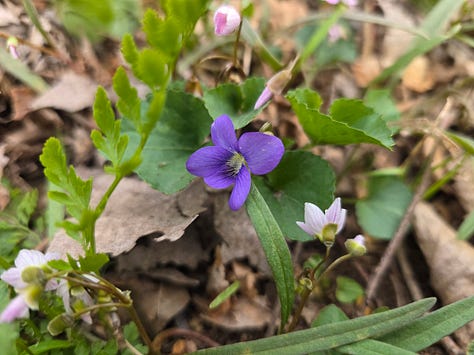
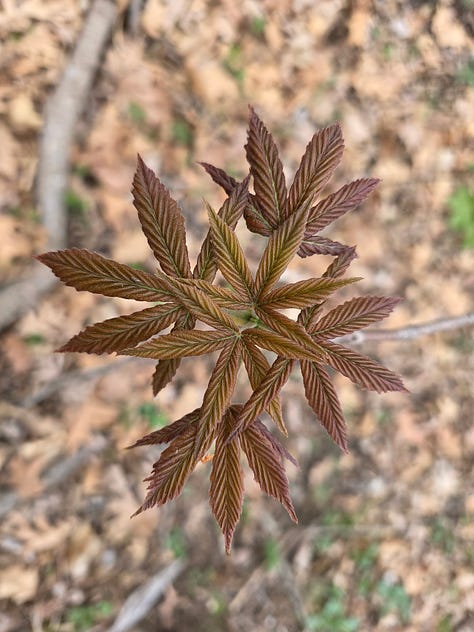
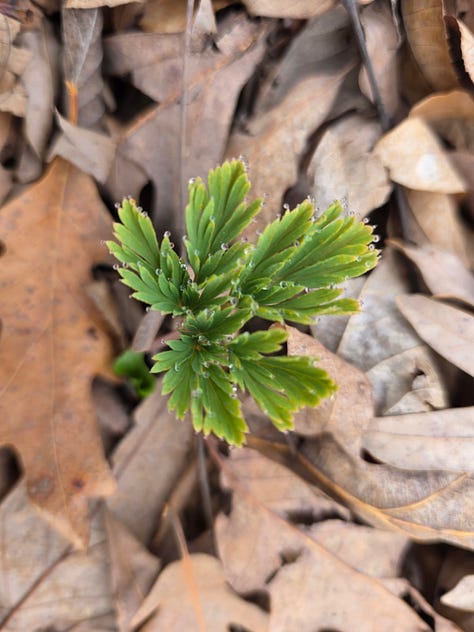

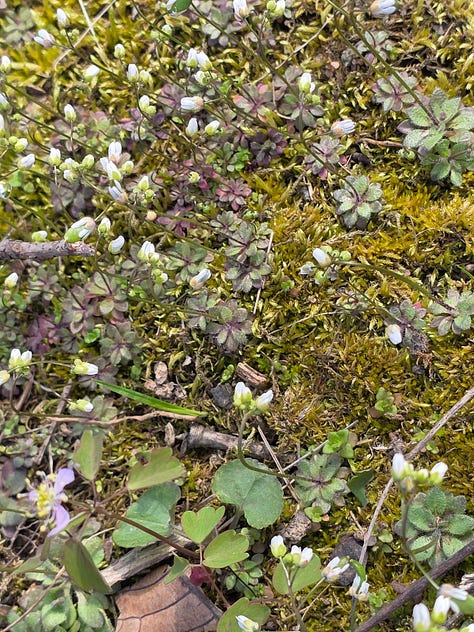
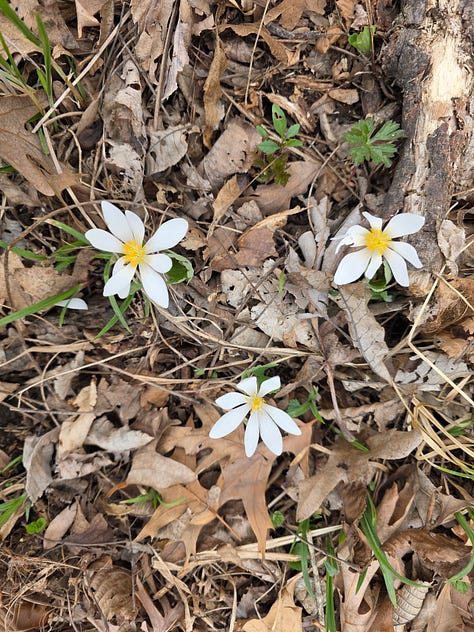
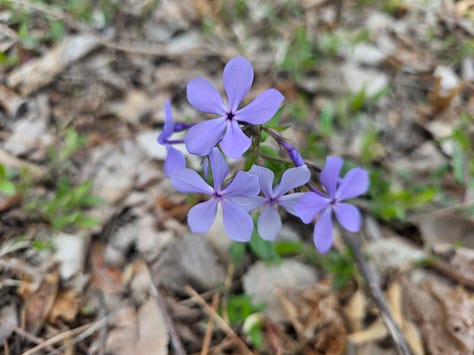


Mayapples are up!
This mole hand, radius, ulna, and humerus were interesting. Such a powerful creature.
The rangers and other staff did a couple more controlled burns last week to maintain the prairie.
I’m always happy to see my friends who do so much to take care of our public parks and recreational areas. These are among the great number of people with boots on the ground who protect our natural world. We owe them our thanks.
"The battle for conservation must go on endlessly. It is part of the universal warfare between right and wrong."—John Muir.
Thanks for reading! Here are four of my favorite nature Substacks: Larry Stone’s “Listening to the Land,” Diane Porter’s My Gaia, Al Batt’s Al’s Substack, and Jaron Sedlock’s Jaron’s Curious Adventures. Please consider subscribing. All will entertain, educate, and soothe your soul.
I’m a member of the Iowa Writers Collaborative. Please sample the talents of my fellow collaborative members. If you can afford to be a paid subscriber, that would be great. If not, the vast majority of content is free.


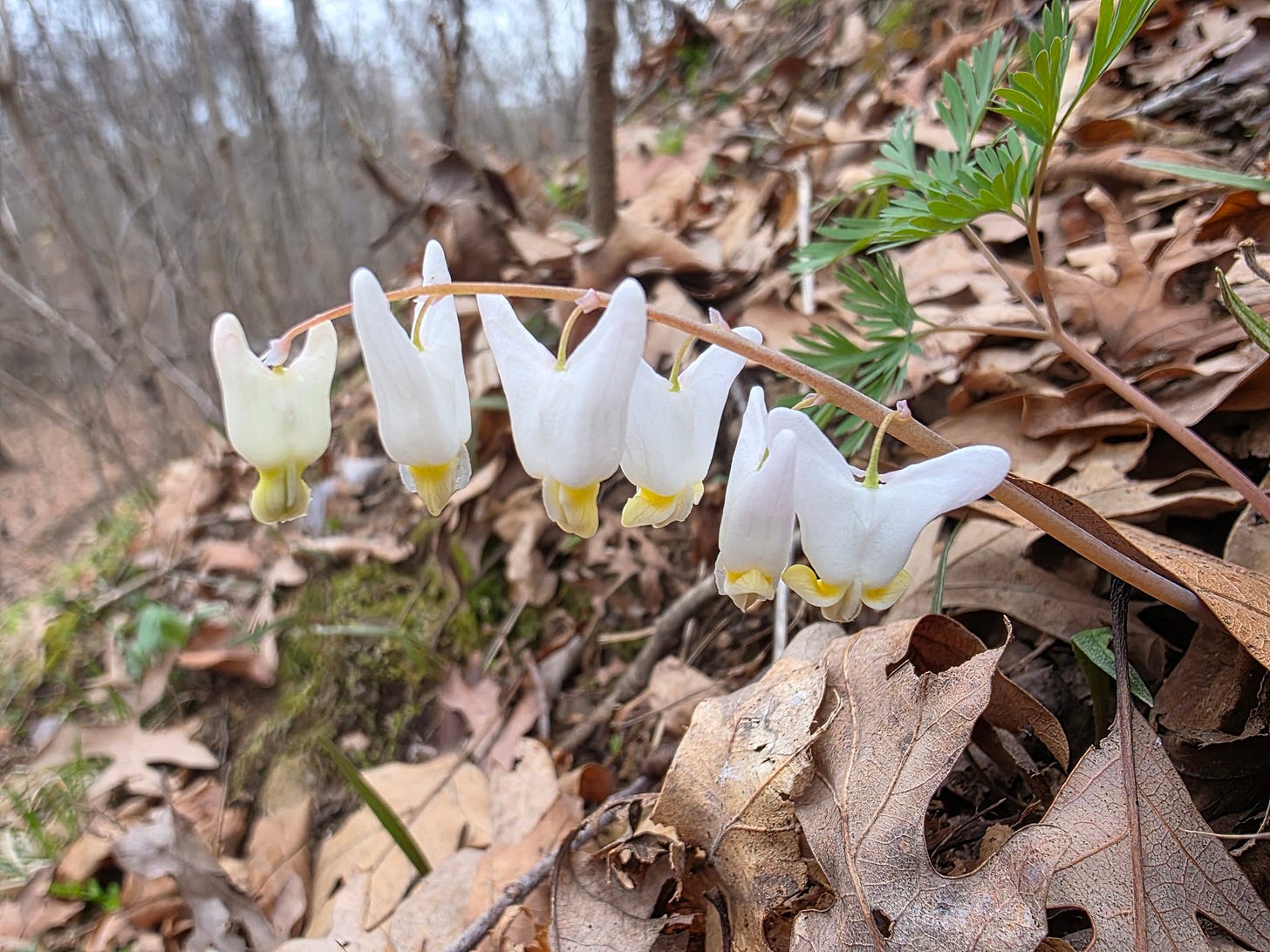
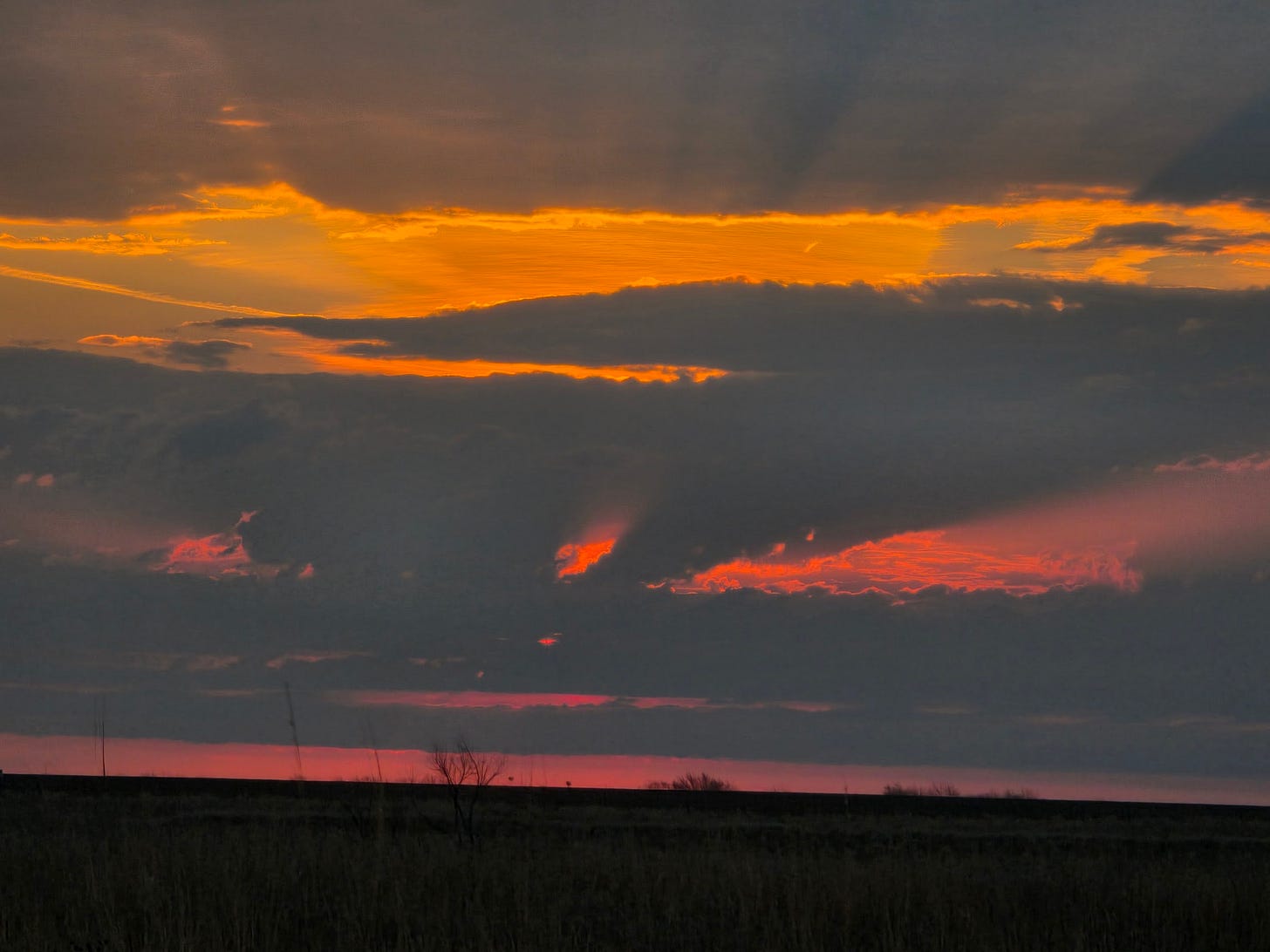

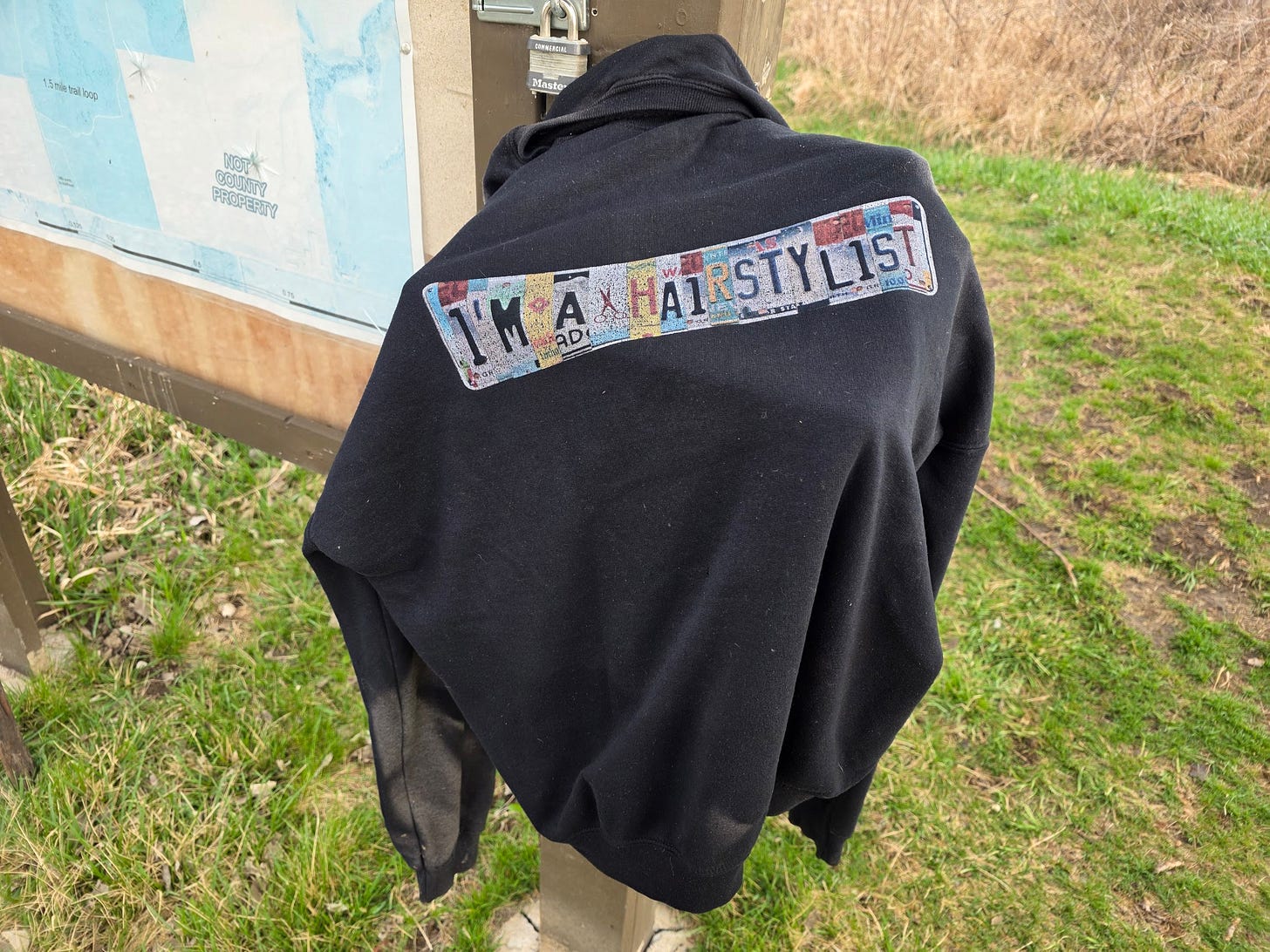
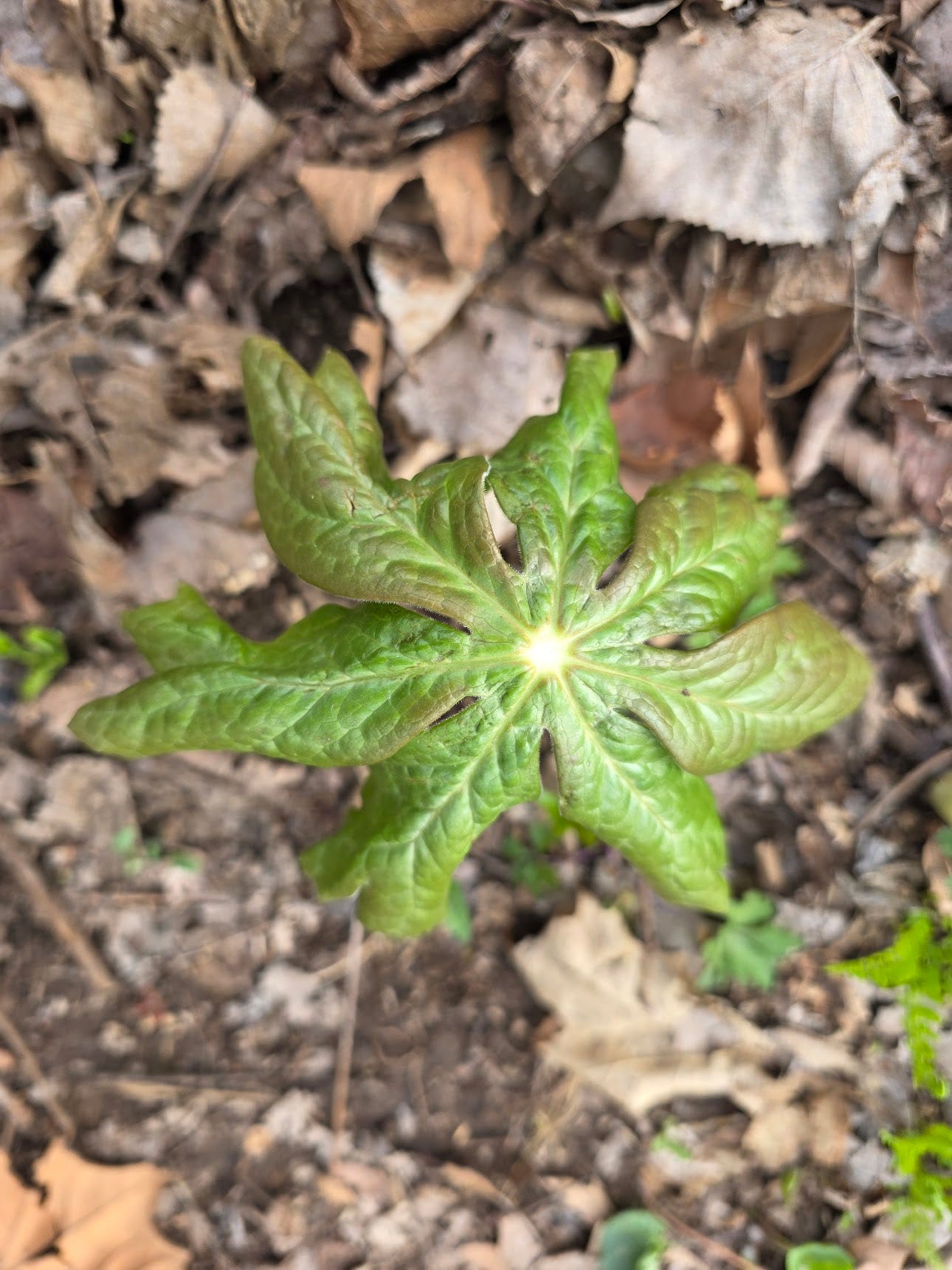

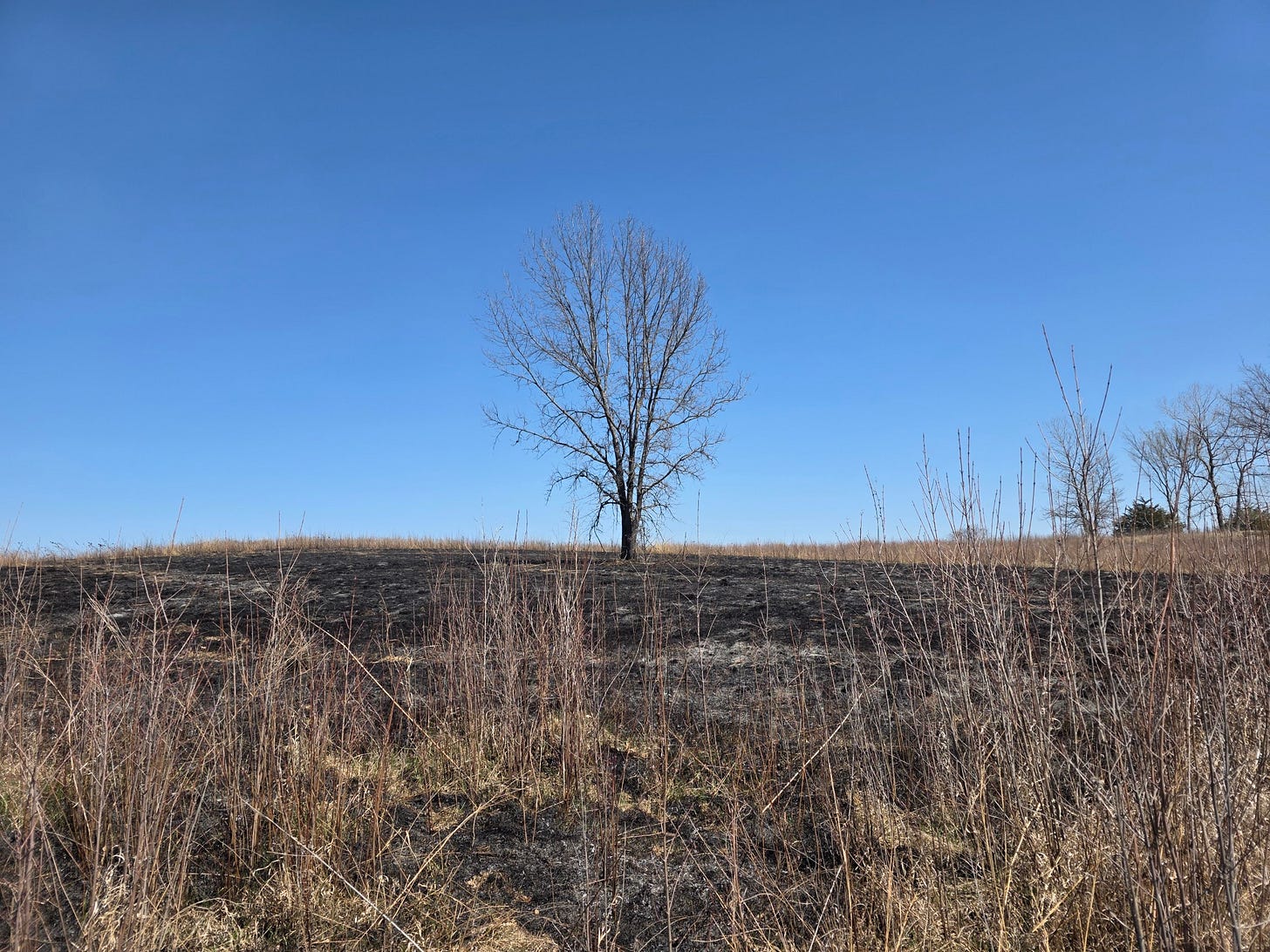

Thank you for taking us on this calm and beautiful walk through the woods, Bob. I needed that this morning. (And I also wonder about the story behind that jacket! Glad it found a home!)
Love the wildflower pictures. There was a hill in my grandmothers timber that was covered with mayapples. At our previous home in Center Point my wife and I transplanted flowers from her folks acreage along Buffalo Creek around their limestone bluffs. Sweet Williams, blue bells, Jack in the pulpits, bleeding hearts, and columbine. They all went in the shaded flower bed beneath our large weeping willow. We also transplanted a little plant with small purple flowers that neither of us had seen before. It was creeping charlie ( other names?) a noxious weed. A neighbor asked if we were crazy for planting it. We planted it in a slightly sunny location close to the edge of the flower bed. We liked it and let it grow a season to see what would happen. BIG MISTAKE! It ended up being found in different locations on our property for the 36 years we lived there. I tried to eradicate it, pulling it when ever I saw it. One man's flower is another man's weed.